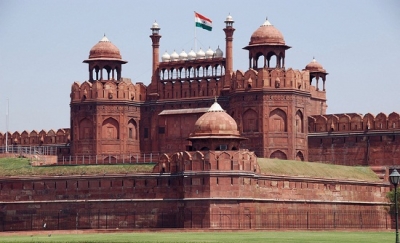
Red Fort has always been of place of attention, interest, and curiosity for anyone born in this nation India. Emperor Shah Jahan commissioned the construction of the Red Fort on 12 May 1638, when he decided to shift his capital from Agra Delhi Originally red and white, its design is credited to architect Ustad Ahmad Lahori, who also constructed the Taj Mahal. As per the Archaeological Survey of India, parts of the building were made of limestone which is usually white in colour. It was only after the white stone started chipping off that the building was painted fully red by the British. The Red Fort is famous for its massive enclosing walls. The fort’s construction was completed over a span of ten years, between 1638 and 1648.
Red Fort was not always known by its current name? It was originally known as “Qila-e-Mubarak”. This name simplifies to “The Blessed Fort”. The interesting fact is this Fort was not initially known as ‘Lal Qila’ but ‘Qila -e -Mubarak’ which means the ‘Blessed Fort’. It was also said that the Kohinoor diamond was part of the Shah Jahan’s throne, known as the famous name; Peacock Throne, which was later abducted by Nadir Shah during the Persian Invasion in 1738.
Bahadur Shah Zafar, the final Mughal Emperor, became a symbol of the 1857 insurrection against the British dominion. The British tried him for treason in his own house, the Red Fort. The trial was held at Diwan-i-Khas, surrounded by the British court, and the emperor was judged guilty, and his title was removed from him. He was afterwards banished to Rangoon (now called Myanmar).
Picture Credit : Google




